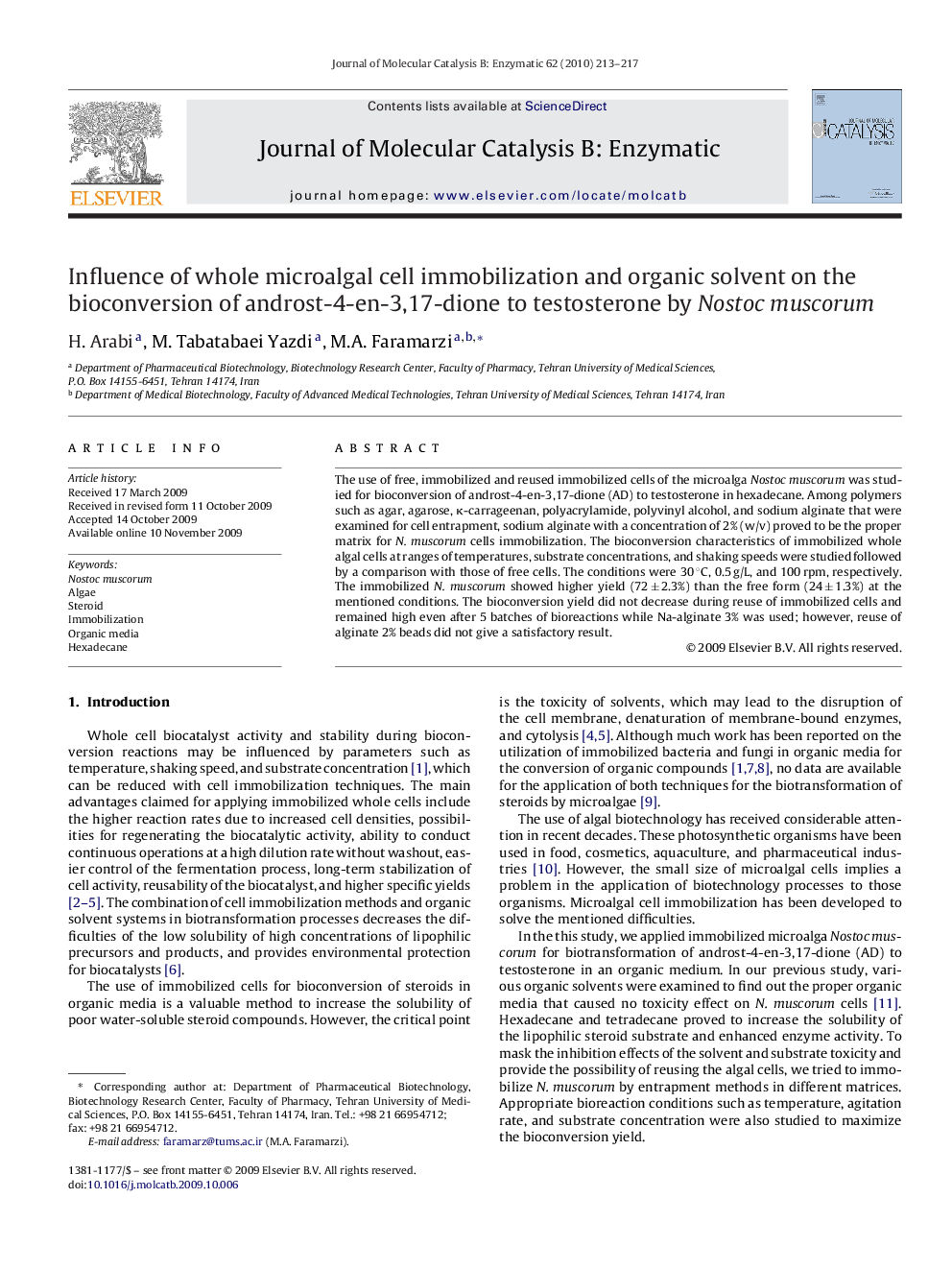| Article ID | Journal | Published Year | Pages | File Type |
|---|---|---|---|---|
| 70517 | Journal of Molecular Catalysis B: Enzymatic | 2010 | 5 Pages |
The use of free, immobilized and reused immobilized cells of the microalga Nostoc muscorum was studied for bioconversion of androst-4-en-3,17-dione (AD) to testosterone in hexadecane. Among polymers such as agar, agarose, κ-carrageenan, polyacrylamide, polyvinyl alcohol, and sodium alginate that were examined for cell entrapment, sodium alginate with a concentration of 2% (w/v) proved to be the proper matrix for N. muscorum cells immobilization. The bioconversion characteristics of immobilized whole algal cells at ranges of temperatures, substrate concentrations, and shaking speeds were studied followed by a comparison with those of free cells. The conditions were 30 °C, 0.5 g/L, and 100 rpm, respectively. The immobilized N. muscorum showed higher yield (72 ± 2.3%) than the free form (24 ± 1.3%) at the mentioned conditions. The bioconversion yield did not decrease during reuse of immobilized cells and remained high even after 5 batches of bioreactions while Na-alginate 3% was used; however, reuse of alginate 2% beads did not give a satisfactory result.
